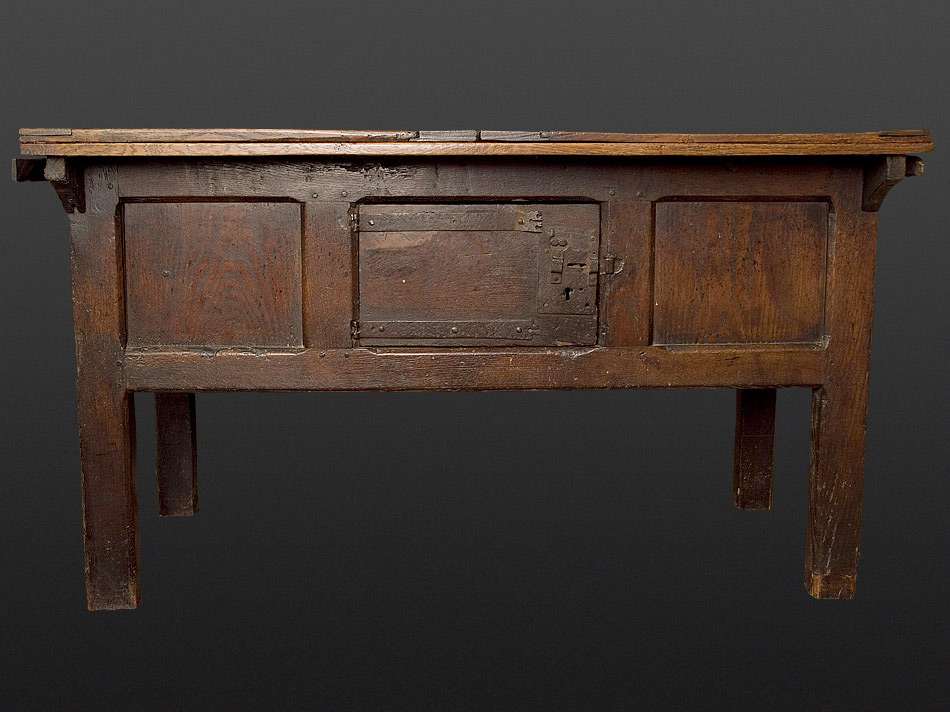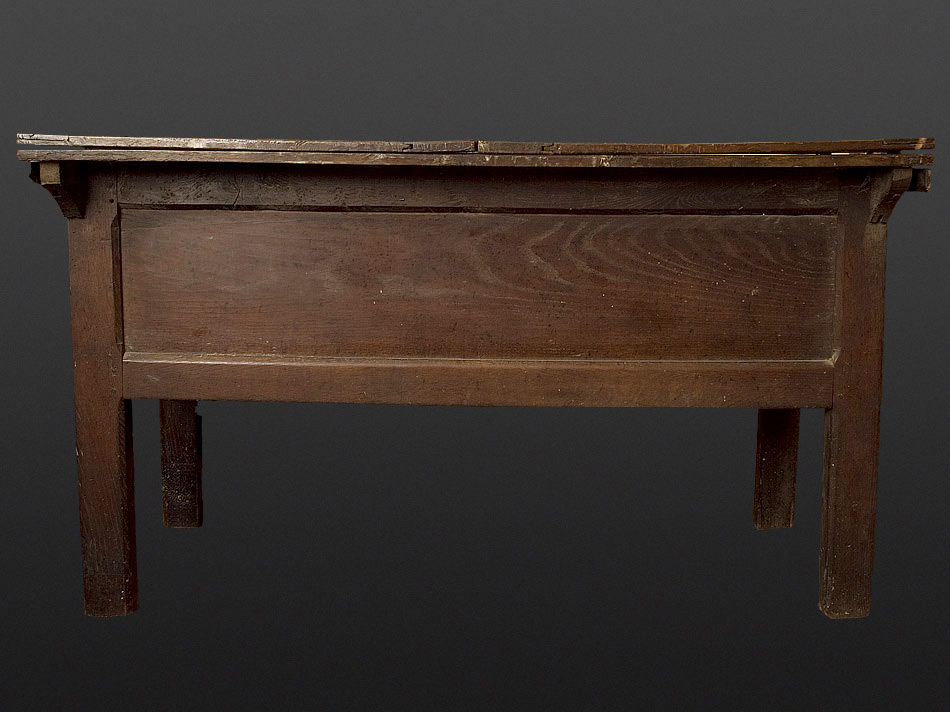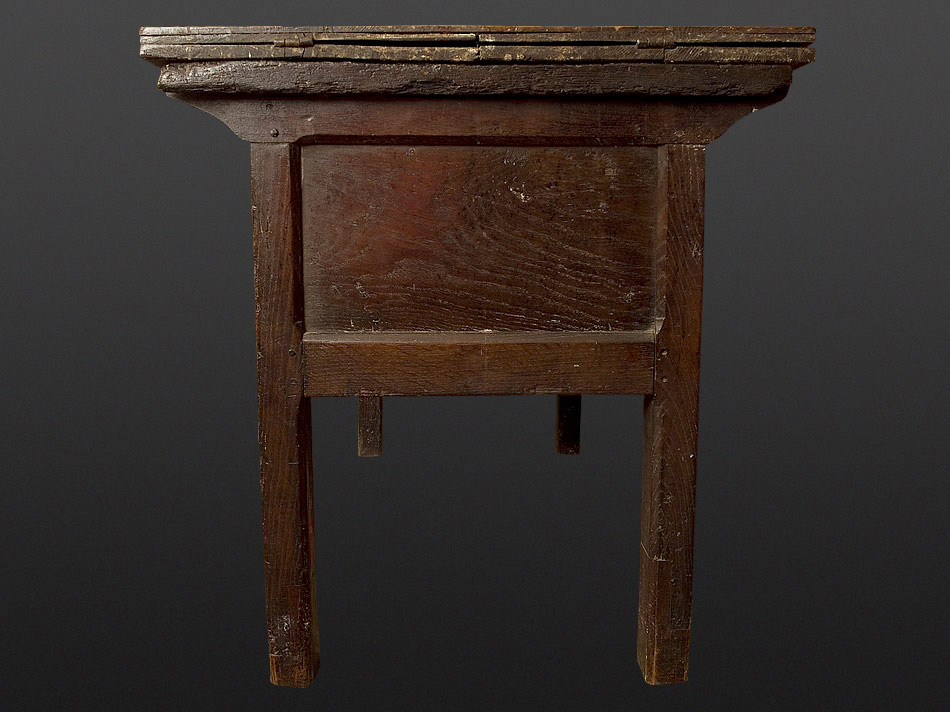Henry VIII oak table – cupboard
Circa 1540
England, probably East Anglia
W 52" × H 30.75" × D 29.5"
Stock # MARH0182
SOLD
A previously unrecorded Tudor joined table with cupboard and folding leaves. The front framed with two panels flanking a central, recessed door which opens to reveal an interior compartment. Upper side rails extend to form cleats designed to support the fixed top-board. The two hinged leaves, which rest atop the fixed top-board when not in use, fold outward upon sliding braces that retract within the joined carcass along grooves. Configured with a one massive back panel, and single, deeply chamfered floorboard fully framed into all four bottom-rails. All framing members finely worked with chamfers terminating in lambs-tongue stops Undisturbed surface composed of apparently original thin red stain. Original ironwork. Top and one sliding brace are old replacements, dating to no later than the eighteenth-century. Stretchers lost.
This complex and unusual form of joined case furniture may have been designed for use by a textile merchant. Bolts of cloth could be unrolled and cut to length on the extended leaves, while the lockable interior compartment served as storage for currency, shears, and measuring implements. Examples of sixteenth-century non-domestic joined furniture are exceedingly rare. No more than a dozen sixteenth-century joined tables with cupboard survive. Most examples appear to have been configured with fixed tops. Only one other retains indication of an original, compound top. Closely related in proportion and details of construction and equipped with identical ironwork, this second example is a draw-leaf table, illustrated as fig. 3:158 in Oak Furniture: The British Tradition.
A standing cupboard with doors and drawers probably produced by the same workshop bears a similar sequence of chamfering on the faming members and identical ironwork, illustrated as lot 53 in The Adler Collection, Sothebys, 24 February, 2005.


